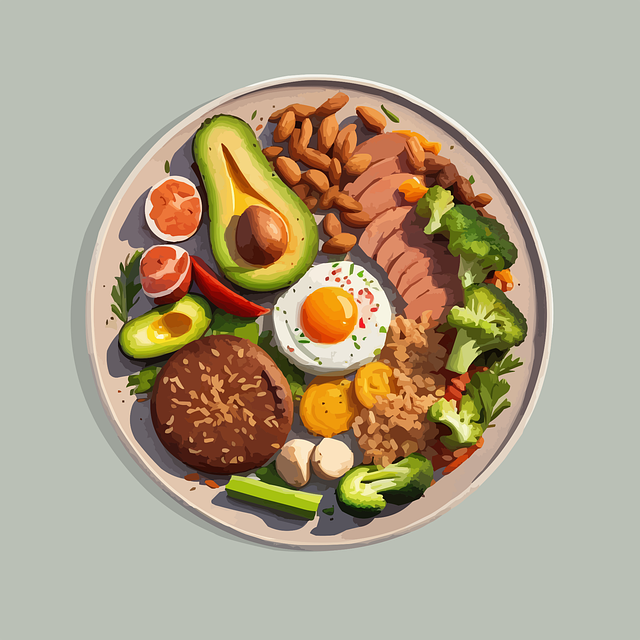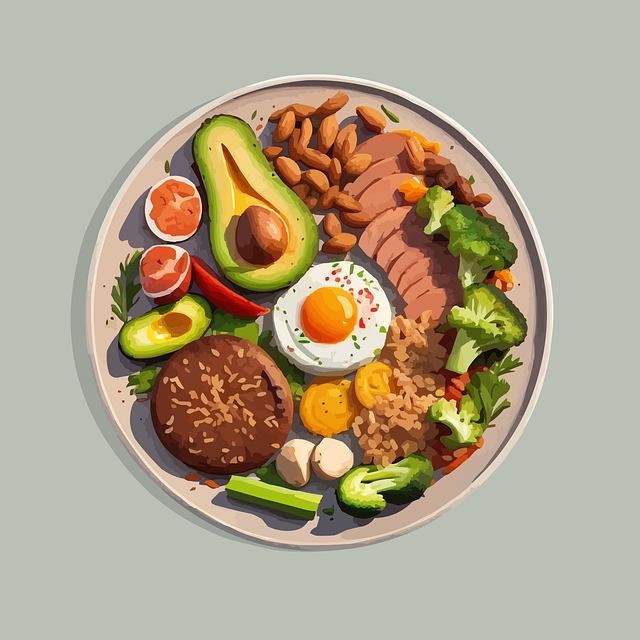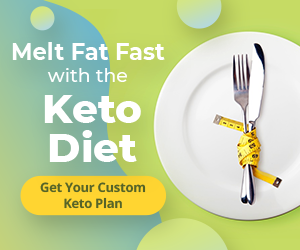Have you ever wondered what exactly the keto diet is and how it can benefit you? Well, you’re in luck because today we’re diving into the world of the keto diet and everything you need to know about it. Whether you’re looking to shed some pounds or simply improve your overall health, the keto diet might just be the answer you’ve been searching for.
So, what exactly is the keto diet? The ketogenic diet, commonly referred to as the keto diet, is a low-carb, high-fat diet that has gained quite a bit of popularity in recent years. The main goal of the keto diet is to put your body into a state of ketosis, where it starts using fat as its primary fuel source instead of carbohydrates. By drastically reducing your carb intake and increasing your fat consumption, the keto diet aims to help you burn fat more efficiently and effectively. Intrigued? Well, in this article, we’ll be delving deeper into the science behind the keto diet and exploring its various benefits, from weight loss to improved mental clarity. Trust me, by the end of this read, you’ll be armed with all the information you need to determine if the keto diet is the right fit for you. The keto diet, also known as the ketogenic diet, is a low-carbohydrate, high-fat diet that has gained popularity in recent years for its potential health benefits. This article will provide a comprehensive overview of the keto diet, including its definition, how it works, the benefits it offers, and much more. By the end of this article, you will have a thorough understanding of the keto diet and whether it may be the right choice for you.
What is the Keto Diet?
Definition of the Keto Diet
The keto diet is a low-carbohydrate, high-fat diet that involves drastically reducing your carbohydrate intake and replacing it with fat. By doing so, your body enters a metabolic state called ketosis, where it primarily burns fat for fuel instead of glucose. This metabolic shift can have various benefits, including weight loss and improved energy levels.
How Does the Keto Diet Work?
When you significantly decrease your carbohydrate intake, your body needs to find an alternative source of fuel. It begins to break down stored fat into ketones, which are molecules produced in the liver. These ketones then become the primary source of energy for your body and brain. By limiting your carbohydrate intake and increasing fat consumption, you can effectively encourage your body to enter ketosis.
Benefits of the Keto Diet
The keto diet offers several potential benefits, making it an appealing option for those looking to improve their health and lose weight.
Weight Loss on the Keto Diet
One of the primary reasons people turn to the keto diet is for weight loss. By limiting carbohydrates and increasing fat intake, the keto diet helps promote weight loss by suppressing appetite, boosting metabolism, and encouraging the body to burn stored fat for fuel.
Improved Heart Health
The keto diet has also been associated with improved heart health markers. It has been shown to decrease levels of LDL (bad) cholesterol while increasing levels of HDL (good) cholesterol. Additionally, the keto diet may help reduce blood triglyceride levels, which are a risk factor for heart disease.
Better Blood Sugar Control
For individuals with type 2 diabetes or insulin resistance, the keto diet may be particularly beneficial. By minimizing carbohydrate intake, the keto diet helps regulate blood sugar levels, reducing the need for insulin and potentially improving insulin sensitivity.
Increased Energy Levels
Many people report increased energy levels and improved mental clarity on the keto diet. By utilizing fat as the primary fuel source, the body can provide a steady stream of energy, avoiding the highs and lows associated with blood sugar fluctuations.
Getting Started with the Keto Diet
Understanding Ketosis
Before embarking on the keto diet, it is important to understand the concept of ketosis. Ketosis is a metabolic state in which your body shifts from using glucose as its primary fuel source to using ketones, which are derived from fat. To enter ketosis, you need to significantly reduce your carbohydrate intake and increase your fat consumption.
Calculating Macros for the Keto Diet
To ensure you are following the keto diet correctly, it is necessary to calculate your macronutrient ratios. The standard keto diet typically involves consuming around 75% of calories from fat, 20% from protein, and 5% from carbohydrates. These percentages may vary slightly depending on individual needs and goals.
Foods to Eat on the Keto Diet
The keto diet focuses on consuming foods that are high in healthy fats, moderate in protein, and low in carbohydrates. Some examples of foods you can enjoy on the keto diet include avocados, nuts and seeds, fatty fish, meat and poultry, non-starchy vegetables, and full-fat dairy products.
Foods to Avoid on the Keto Diet
There are certain foods and beverages that should be avoided while on the keto diet. These include sugary foods and drinks, grains, starchy vegetables, most fruits, legumes, and processed foods. It is important to carefully read labels and be mindful of hidden carbohydrates.

Health Effects of the Keto Diet
Weight Loss on the Keto Diet
As mentioned earlier, weight loss is one of the primary benefits of the keto diet. By restricting carbohydrates and increasing fat intake, the body is forced to burn stored fat for fuel, resulting in weight loss. It is important to note that weight loss may vary from person to person and other factors such as overall calorie intake and physical activity levels also play a role.
Improved Heart Health
The keto diet has been shown to have positive effects on heart health markers. Studies have found that the diet can decrease levels of LDL cholesterol, which is associated with an increased risk of heart disease. Additionally, the keto diet has been shown to increase levels of HDL cholesterol, which is considered protective against heart disease.
Better Blood Sugar Control
For individuals with type 2 diabetes or insulin resistance, the keto diet may help improve blood sugar control. By minimizing carbohydrate intake, the diet can help regulate blood sugar levels and reduce the need for insulin. This can lead to improved insulin sensitivity and better overall blood sugar management.
Increased Energy Levels
Many people report increased energy levels and improved mental clarity when following the keto diet. This is likely due to the steady supply of energy derived from ketones, which provide a more stable energy source compared to the fluctuations associated with glucose utilization.
Potential Risks and Side Effects
Keto Flu
When first starting the keto diet, some individuals may experience what is commonly known as the “keto flu.” This temporary condition is characterized by symptoms such as fatigue, headache, brain fog, and nausea. These symptoms typically subside within a few days to a week as your body adjusts to using ketones for energy. Staying hydrated and ensuring an adequate intake of electrolytes can help alleviate these symptoms.
Nutrient Deficiencies
Restricting carbohydrates and certain food groups on the keto diet may increase the risk of nutrient deficiencies. It is important to choose nutrient-dense foods and consider supplementation if necessary. Working with a healthcare professional or registered dietitian can help ensure you are meeting your nutritional needs.
Digestive Issues
Some individuals may experience digestive issues when transitioning to the keto diet. This can include symptoms such as constipation, diarrhea, or changes in bowel movements. Drinking plenty of water, consuming fiber-rich foods, and incorporating probiotic-rich foods can help promote healthy digestion.
Elevated Cholesterol Levels
While the keto diet has been shown to improve heart health markers in many individuals, it can sometimes lead to elevated cholesterol levels. This is often a temporary effect and may resolve over time. It is essential to monitor cholesterol levels and consult with a healthcare professional if concerns arise.

Different Types of the Keto Diet
Standard Ketogenic Diet
The standard ketogenic diet is the most common and well-known version of the keto diet. It involves consuming a high-fat, moderate-protein, and low-carbohydrate diet. The macronutrient breakdown for this diet is typically around 75% fat, 20% protein, and 5% carbohydrates.
Cyclical Ketogenic Diet
The cyclical ketogenic diet involves cycling periods of a standard ketogenic diet with higher-carb days. This can be useful for individuals who engage in high-intensity exercise or have specific performance goals. On high-carb days, carbohydrate intake is increased, while on low-carb days, individuals return to the standard ketogenic diet.
Targeted Ketogenic Diet
The targeted ketogenic diet is similar to the cyclical ketogenic diet but involves consuming a small amount of carbohydrates before or after workouts to support performance and recovery. This allows the body to quickly replenish glycogen stores, which can be beneficial for athletes or those engaging in intense physical activity.
High-Protein Ketogenic Diet
The high-protein ketogenic diet is a variation of the standard ketogenic diet that emphasizes higher protein intake. It typically involves consuming around 60% fat, 35% protein, and 5% carbohydrates. This variation may be more suitable for individuals who require higher protein intake for muscle building, athletic performance, or specific dietary preferences.
Tips for Success on the Keto Diet
Meal Planning and Prepping
To ensure success on the keto diet, it is essential to plan and prepare your meals in advance. This will help you stay on track, avoid temptation, and ensure you are consuming a well-balanced diet.
Staying Hydrated
Drinking enough water is crucial on the keto diet. Water helps support digestion, optimize metabolic function, and prevent dehydration. Additionally, staying hydrated can help alleviate some common keto flu symptoms.
Getting Enough Electrolytes
When following a low-carbohydrate diet like keto, it is important to pay attention to your electrolyte intake. Restricting carbohydrates can lead to a loss of electrolytes, which can cause symptoms such as muscle cramps, fatigue, and dizziness. Consuming foods rich in potassium, magnesium, and sodium can help maintain proper electrolyte balance.
Managing Cravings
Carbohydrate cravings can be a common challenge on the keto diet. To manage cravings, it can be helpful to incorporate foods that provide satiety and satisfy your sweet or savory tooth without disrupting ketosis. This may include low-carb snacks, healthy fats, and keto-friendly sweeteners.

Combining Keto with Exercise
Benefits of Exercising on the Keto Diet
Exercising while on the keto diet can offer several benefits. It can help enhance weight loss, improve insulin sensitivity, increase muscle mass, boost energy levels, and improve overall fitness and cardiovascular health.
Types of Exercises to Do on Keto
While on the keto diet, it is important to choose exercises that are compatible with your energy levels and fitness goals. Low- to moderate-intensity exercises such as walking, jogging, cycling, and yoga can be suitable for individuals transitioning to the keto diet. As your body adapts to using ketones as fuel, you can gradually incorporate more intense workouts such as weightlifting or high-intensity interval training.
Pre- and Post-Workout Nutrition
Fueling your body properly before and after a workout is essential for optimal performance and recovery. On the keto diet, pre-workout nutrition may include consuming a small amount of protein and fat, while post-workout nutrition could involve consuming a combination of protein and carbohydrates to replenish energy stores.
Potential Challenges and How to Overcome Them
Social and Peer Pressure
Following a restrictive diet can sometimes be challenging in social settings, especially when faced with peer pressure to indulge in high-carb or sugary foods. Being open with friends and family about your dietary choices, bringing your own keto-friendly dishes to events, or politely declining certain foods can help navigate these situations.
Eating Out on the Keto Diet
Eating out while on the keto diet can be challenging, as many restaurant meals are high in carbohydrates. However, with careful menu selection, it is still possible to enjoy a delicious keto-friendly meal. Opting for dishes that are centered around protein and vegetables, asking for modifications, and avoiding breaded or fried foods can help you stay on track.
Traveling on Keto
Traveling can pose a challenge when following the keto diet, as access to keto-friendly food options may be limited. Planning ahead, packing portable keto snacks, researching restaurants or grocery stores at your destination, and maintaining an open mindset can help you stay on track while traveling.
Dealing with Plateaus
It is not uncommon to experience plateaus while on the keto diet, where weight loss stalls despite following the diet correctly. When this happens, it can be helpful to reassess your macronutrient ratios, track your food intake more accurately, increase physical activity, or introduce intermittent fasting to jumpstart your progress.
Maintaining Long-Term Success
Transitioning to a Balanced Diet
While the keto diet can be effective for short-term weight loss and health improvements, it may not be suitable or sustainable for everyone in the long term. Transitioning to a balanced diet that includes a variety of nutrient-dense foods can help maintain your health and allow for more flexibility in food choices.
Preventing Weight Regain
To prevent weight regain after following the keto diet, it is important to focus on long-term lifestyle changes rather than relying solely on strict dietary patterns. Regular physical activity, mindful eating, and establishing healthy habits can help maintain weight loss and overall well-being.
Finding Support and Accountability
Finding support and accountability can greatly benefit your success on the keto diet. Joining online communities, seeking guidance from registered dietitians or healthcare professionals, or involving friends or family members who are also following the keto diet can provide valuable support, motivation, and guidance.
Conclusion
In conclusion, the keto diet is a low-carbohydrate, high-fat diet that has gained significant popularity due to its potential health benefits. By understanding the principles of ketosis, calculating macronutrient ratios, and making informed food choices, you can successfully follow the keto diet to achieve weight loss, improved heart health, better blood sugar control, increased energy levels, and more. However, it is important to consider individual needs, potential risks and side effects, and long-term sustainability when deciding whether the keto diet is the right choice for you. Remember, consulting with a healthcare professional or registered dietitian is always recommended before starting any new diet or lifestyle change. Good luck on your keto journey!




